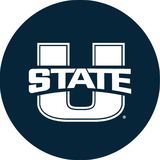
3 minute read
Welcome!
A Message from the Department Head
Sean Michael, Department Head
Advertisement
Ecotone is a concept familiar to landscape scholars and practitioners alike. Lying at the verge of two generally distinct biomes, these fertile strips rely upon a blend of contrasting systems to produce a more diverse place. As shapers of the land, we apply that same formula in creating meaningful built environments, too. Outdoor living spaces blend garden with architecture. Street cafes are part sidewalk, yet part restaurant.
Despite the enduring lessons these natural settings (and our biomimicry of them) testify of, I’m reminded that in society all such balance is tenuous. Without vigilance, imbalance tends to occur. Budgets are eaten up by architecture, with sites and site designers left footing the bill. Students prodded to incur no debt will work jobs during school, even to the detriment of their academic raison d’etre. Curricula drift towards an abundance of design, with planning/construction/ horticulture/etc. wilting as a result. Or vice versa. Each such example testifies to our need to consciously choose wise balances, and to then guard them fastidiously.
Entropy may be how we explain these tendencies toward failed systems of balance. Nature—as in ecology or human behavior—may explain it equally well. The balancing acts we design into our sites (and work places) are not self-sustaining. Unlike the ecotone between pond and meadow, human systems, whether gardens or other social constructs, require constant tending. Left untended, they quietly devolve.
In a university environment this principle most certainly holds true. We develop and then oversee degrees, bodies of faculty, and facilities with an intentional recipe for our mission. A wonderful result of this resource-intensive process is the unique milieu found within each design program. That flavor is, in part, what distinguishes each of such program. For LAEP, our milieu has taken different forms over the decades. Now, in 2019 (the 80th year since our program’s founding), the flavor has resulted from a recipe conceived and refined for over a decade. This autumn that flavor again shifts as we’ve said farewell to our dear friend and colleague, Prof. Phil Waite (aka, Professor of Grace; Revelation 21:3-4), and as we welcome into our Logan family many new students and two remarkable faculty members, while also applauding the Classes of 2019, now our newest alumni.

43.6453° N, 110.7960° W
Ecotone also aptly describes the interstitial space that department heads operate in. Engaging continuously with diverse and extraordinary colleagues, students, campus leaders, and alumni, we are blessed by having the privilege to observe and serve at all levels. That fascinating, never the-same-as-yesterday mix of activities is central to why I so enjoy this role. Likewise, with my own teaching and scholarship, I’ve been fortunate to meld my lifelong curiosities with place, design and adventure recreation. This past May, for instance, a group of us co-taught USU’s first-ever field course in Moab focusing on public lands and America’s outdoor economy. Oriented around dilemmas threatening these special lands and their adjacent gateway communities, our course explored topics ranging from trail development and UTV damage, to outdoor product testing and the saga of Bears Ears National Monument.

Class of 2019 and LAEP faculty
What lies ahead? Frankly, the sky is the limit for LAEP. Our remarkable trajectory as a community of problem solvers, buttressed by the strong support we have in Dean White and the College of Agriculture & Applied Sciences, positions us to tackle a litany of the most pressing problems threatening our world. I know of no similar program that is comparably prepared and equipped. And so, I am extremely optimistic about the next chapter in our journey. That future, however, relies upon each of us—you included. LAEP rises and falls on the contributions of individuals bound by common values; from the most senior alumnus to the most recently arrived freshman. Each of us has a role. I hope you will ask how you, as a member of our community, can contribute to the mission ahead. Together we can do more.











